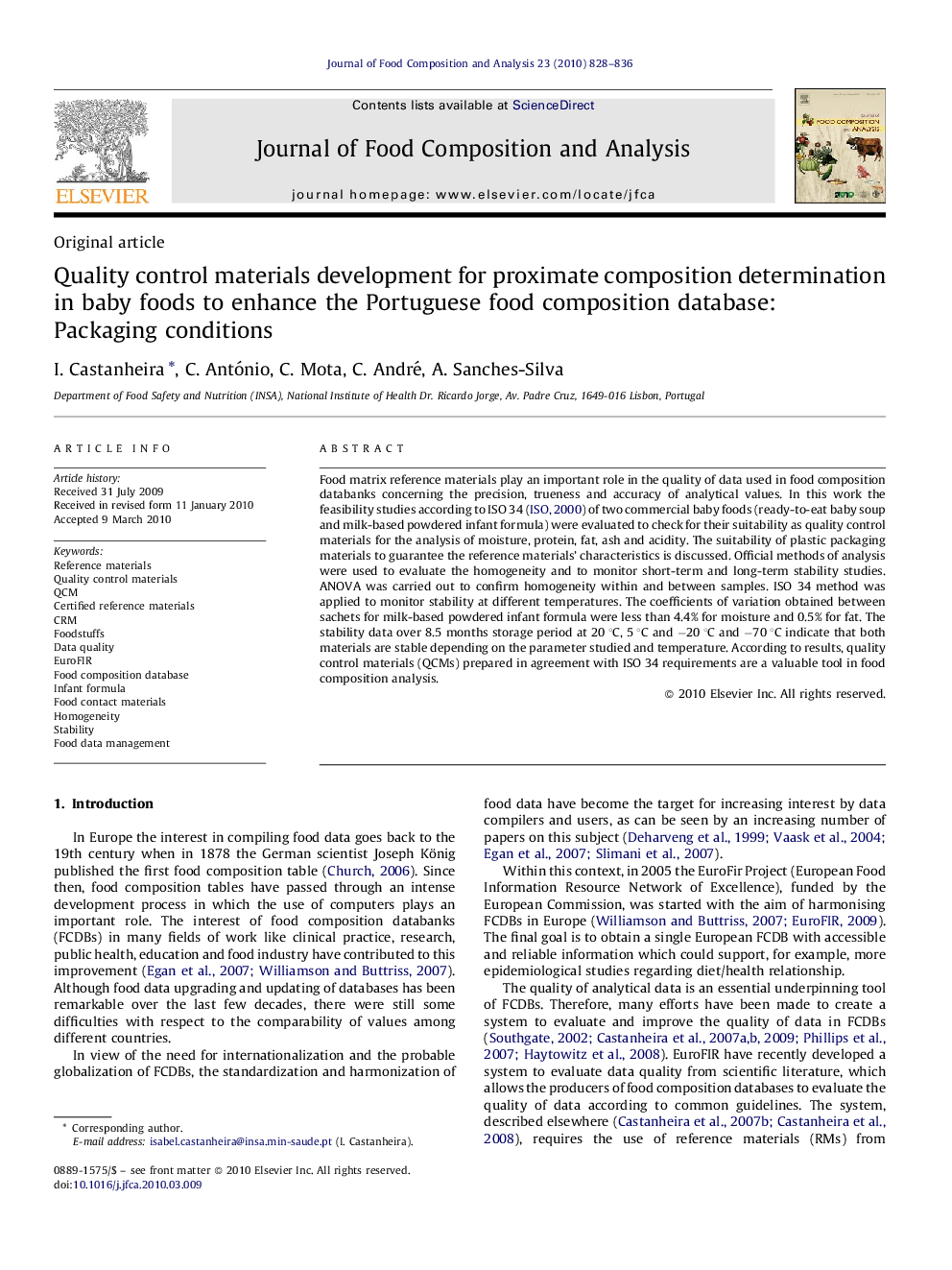| Article ID | Journal | Published Year | Pages | File Type |
|---|---|---|---|---|
| 1218514 | Journal of Food Composition and Analysis | 2010 | 9 Pages |
Food matrix reference materials play an important role in the quality of data used in food composition databanks concerning the precision, trueness and accuracy of analytical values. In this work the feasibility studies according to ISO 34 (ISO, 2000) of two commercial baby foods (ready-to-eat baby soup and milk-based powdered infant formula) were evaluated to check for their suitability as quality control materials for the analysis of moisture, protein, fat, ash and acidity. The suitability of plastic packaging materials to guarantee the reference materials’ characteristics is discussed. Official methods of analysis were used to evaluate the homogeneity and to monitor short-term and long-term stability studies. ANOVA was carried out to confirm homogeneity within and between samples. ISO 34 method was applied to monitor stability at different temperatures. The coefficients of variation obtained between sachets for milk-based powdered infant formula were less than 4.4% for moisture and 0.5% for fat. The stability data over 8.5 months storage period at 20 °C, 5 °C and −20 °C and −70 °C indicate that both materials are stable depending on the parameter studied and temperature. According to results, quality control materials (QCMs) prepared in agreement with ISO 34 requirements are a valuable tool in food composition analysis.
